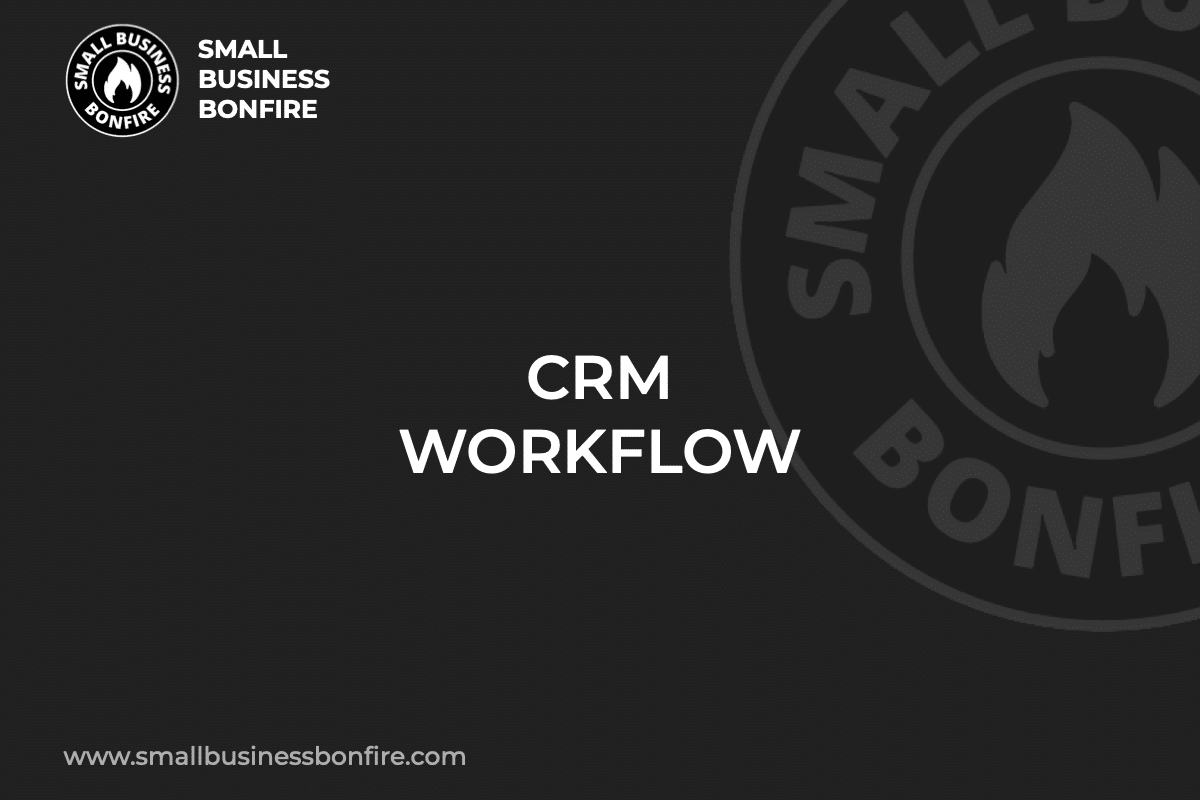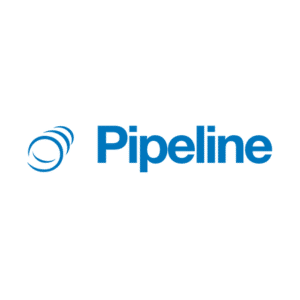Managing customer relationships can be challenging if you don’t have the right tools and procedures available.
Fortunately, CRM software is affordable, making it easy to organize customer information.
My name is AJ. I recently sold my business (for multiple seven figures). CRM workflows & automations were an integral aspect of my business’s success.
I’ve created this guide to teach small business owners like yourself the importance of an efficient CRM workflow.
What do I mean by “workflow”? Let’s take a look at everything you need to know!
Key Takeaways
- Workflow automation is the process of a dedicated platform completing specific tasks automatically.
- Automations allow teams to work more efficiently, reduce human error, and build better customer experiences.
- There are numerous types of automated workflows, including ones for sales processes, leads, task management, and more.
- CRM workflow automation works as certain events or criteria are triggered.
Related Reading: Best Small Business CRM
SBB Featured Partners
What is a CRM Workflow?
A CRM workflow is a series of carefully planned CRM-related tasks completed sequentially.
So, each action within this sequence takes place only after other pre-set conditions are met.
CRM workflows are different from CRM software.
What is a CRM? CRM systems are strategies for managing customer relationships efficiently. A workflow is a series of steps or tasks within the CRM system.
Companies design workflows for the following reasons:
- To move closer to goals
- To get an overview of a long-term process
- To keep closer track of progress
- To better utilize their CRM system
- To automate mundane tasks
Workflows ensure you know about everything you need to do to complete a goal.
Benefits of CRM Workflow Automation
CRM workflow automation allows business owners to automate aspects of the workflow with pre-defined rules.
As you can imagine, there are several benefits to automating routine tasks. Below I’ve listed the most prevalent advantages I noticed after implementing workflow automation.
Less Human Error
The likelihood of employees making mistakes while doing repetitive tasks is high.
One significant advantage of creating workflows is that your business doesn’t have to worry about errors; automation can (almost) completely eradicate mistakes.
Greater Team Productivity
The likelihood of errors isn’t the only downside of repetitive tasks; they can also make things less productive.
CRM workflow automation takes care of routine tasks, so your team can invest more time in creative activities and urgent tasks.
More Transparency & Accountability
Another advantage of workflow automation is more transparency (especially with large-scale teams).
It is difficult for managers to keep track of every employee’s tasks. With automation tools, leaders can offer a transparent overview of all tasks.
Additionally, these tools can send automated notifications and reminders, encouraging team members to stay on task.
Better Customer Relationships
Automation is an excellent tactic for forming better customer relationships.
For instance, automated tasks can perform the following functions to build customer relationships:
- Send personalized emails
- Contact customers via email and text at specific points in the sales pipeline
- Find potential customers
- Organize data for each customer
Increased Customer Engagement
Managing and maintaining excellent customer relationships is easier when you create CRM workflows.
CRM tools can automatically engage with customers at specific points in the customer journey.
As a result, small businesses can offer an improved customer experience.
Lower Costs
Automation helps reduce unnecessary spending by cutting out inefficiencies and, instead, using the money for product development, marketing campaigns, etc.
Imagine if you didn’t have to have a human doing mundane tasks like data entry, copying and pasting, or sending follow-up emails. Game changer!
More Business Scalability
Lastly, automation leads to more sales and business growth.
Because automation builds consistent processes, you and your team can focus more on complex processes and sales productivity.
When to Use CRM Workflow Automation
A common mistake companies make is attempting to use CRM workflow automations all the time.
The truth is there are some instances where automation isn’t efficient. For instance, automated workflows do more harm than good for non-optimized business processes.
It’s best to use automation on developed business processes.
So, before creating automated workflows for every business process, assess whether it’s the right decision.
What Types of Workflows Can a CRM Automate?
Customer relationship management tools can automate several kinds of tasks. Below, I’ve outlined the most common tasks small businesses use workflow automation for.
Sales Process
CRM workflow automation can significantly improve and streamline your sales process.
For instance, these automatons can organize customers and simplify customer interactions.
Additionally, sales process automation can send payment reminders and personalized messages and filter out dead leads.
Email Newsletters
Automation tools can send pre-made emails to new customers who join your list.
Additionally, these workflows can send promotional emails and gather data on the customer for future offers and newsletters.
Example:
If someone signs up for your newsletter, they automatically get your “how to” guide.
Lead Scoring
Lead scoring workflows automatically assign your new customers value based on a scale of 0 to 100.
Additionally, lead scoring workflows take action whenever the customer moves throughout the sales funnel, notifying sales reps of ideal follow-up opportunities.
Drip Marketing
Automated drip campaigns send emails to your customers that aim to nurture leads and guide them through the sales funnel.
Drip campaigns utilize marketing emails that allow sales reps to customize workflows based on customer engagement.
Email drip campaigns can also help filter prospects and aid in lead scoring.
Lead Generation
Automated workflows can also help with lead generation.
For instance, lead generation workflows automatically label customers as potential leads based on whether they follow your company’s call to action.
Lead Alerts
Automated CRM software can notify sales managers when leads entered into your database meet specific criteria.
As a result, you can create workflows that urge sales teams to pursue these leads.
Additionally, workflows can alert your sales team of critical changes to customer accounts or when they need to follow up with them.
Account Management
Workflows can also help with account management tasks.
For example, you can create workflows that automatically send alerts when customer contracts are about to expire.
Therefore, your team can improve customer retention rates and work more efficiently because you don’t have to send these reminders manually.
Reporting
One of the best aspects of CRM software is that they create in-depth reports.
Using automation, your CRM can automatically create and send these reports to the appropriate team members.
Creating reports is one of the more time-consuming tasks within a business. And workflow automation can help your team work more efficiently in this regard.
Call Logging
Call logging workflows ensure you follow up with missed calls from customers.
These workflows automatically create callback tasks for unanswered, ensuring your company provides excellent customer support.
Customer Service
Lastly, you can utilize automation to provide better customer support.
These workflows can do the following tasks:
- Send customer service emails
- Flag customers that need follow-up attention
- Alert sales teams when it’s time to follow up
- Close more help tickets
How a CRM Can Automate Workflows
CRM workflows are typically created with “if-then” logic.
For example, “if” a customer subscribes to an email list, “then” they receive an automated welcome message, email campaigns, etc.
These automations create a series of interactions between the customers and your company based on customer data from the CRM software.
As a result, customer interactions are data-driven and more personalized.
How to Create Workflows With a CRM
Now that you understand the benefits of an automated CRM tool, it’s time to learn how to create a workflow.
Step 1: Determine What SOPs Need Workflows
Remember, CRM workflow automation doesn’t work for every process.
That said, it’s best to avoid automating tasks that demand considerable human attention. Instead, automate repetitive tasks early in the marketing or sales processes.
Your business should consider several types of automated processes. Some of my favorites include the following:
- Deal management
- Lead generation
- Contact statuses and management
- Email marketing
- Outbound sales
- Manual data entry
Step 2: Setup Workflows in Your CRM of Choice
After determining which process would be better off automated, it’s time to create your workflows!
During this step, it’s critical to brainstorm anything that could go wrong within the workflow and ensure you cover every base.
Creating workflows is usually time-consuming if you’re doing it for the first time. However, the time they save in the long run makes the initial process worth it.
As you create workflows, have team members in various departments analyze and contribute to the process, especially when it impacts their department directly.
Step 3: Test Workflows
Testing your workflow is the only way to determine its effectiveness.
My team and I tested new workflows rigorously to ensure we knew the system would be okay if anything went wrong.
Brainstorm as many scenarios as possible while testing your workflow.
This step ensures your workflow automation is helpful and efficient within your CRM software.
Step 4: Keep Your Team Up to Date on Workflow Changes
The final step is simple but one several business owners forget about.
It’s essential to keep your team in the loop whenever there are changes to the workflow.
Think about it. If team members aren’t informed when something changes, vital tasks could slip through the cracks.
When this happens, it can lead to poor customer experience, lost sales, and inefficiencies.
Step 5: Get Feedback from Your Team
After you’ve setup your workflows, continue to monitor them and get feedback from your team.
This step involves creating a culture of transparency and communication.
Let your team know that you’re not trying to automate them out of a job but that you’re trying to scale further to help promote them.
Pro Tip: Setup a rewards system based on process automation!
CRM Workflow Best Practices
CRM workflow automations are helpful when they’re implemented correctly.
It’s essential to consider that you should tailor each workflow to your business.
I’ve outlined a few things to remember while creating your first workflow so the task is less challenging.
Know What CRM Handles Workflow the Best
There are numerous CRM software options, and if your company focuses on workflow automation, it’s vital to find a tool that meets these needs.
But what features should you look for? Based on my experience, I recommend looking for the following aspects to create efficient workflows:
- An easy to use software
- Widely accessible (you can see your data from a desktop, tablet, mobile phone, etc.)
- Customizable
- Integration with other software and tools
- Free customer support and training
Finding a complete solution for your company is possible. However, you must carefully consider your team and customer needs before investing in a CRM tool.
Use Available Third-Party Integrations
Third-party integrations are an effective tool to save time and improve your team’s productivity.
When choosing third-party applications, look at the areas where your CRM software is weak and fill in the gaps with these tools.
Additionally, consider any tools or features your departments might need.
Regularly Review Your Workflows
Although your workflow automation processes may be perfect when initially implementing them, reviewing them continually is crucial.
Your company and market will continually change. Therefore, updating and altering your workflow is essential when this happens.
Some I recommend doing when you’re building custom workflows is regularly meeting with your team and noting any areas where they’re struggling.
Team members can bring up potential changes you may not think of.
CRM Workflow Examples
There are numerous kinds of workflows you can implement. I’ll list a couple I have used within my company.
Deal management flows are a great way to streamline the sales pipeline. Deal management oversees and tracks potential deals in the sales pipeline.
CRM tools like Zoho CRM automate aspects of this flow using “if-then” conditions. “If-then” conditions with Zoho CRM work like this:
“If” a new lead enters the pipeline that’s over a certain dollar amount, “then” it is assigned to a designated sales team member.
Lead assignment workflows help hold teams accountable for newly generated leads.
Therefore, your team can run these workflows to organize the records you generate through ads or other lead sources.
These workflows make lead scoring more efficient and disperse tasks fairly.
Wrapping Things Up!
Creating customer relationship management workflows is time-consuming and detail-oriented initially.
However, workflow automation saves your company time and prevents employees from doing too many manual tasks.
Remember to implement workflow automation tasks that fit your business’s unique needs within your CRM software.
Did you see a type of CRM workflow that we missed? If so, let us know in the comments section below.
Good luck building your first CRM workflow automation!
Newsletter Signup
Join The Leads Field Guide Newsletter for tips, strategies and (free) resources for growing your leads, and closing more deals.




